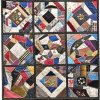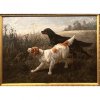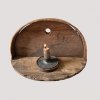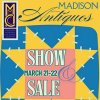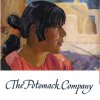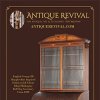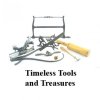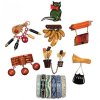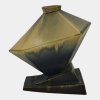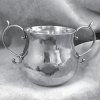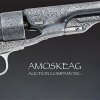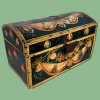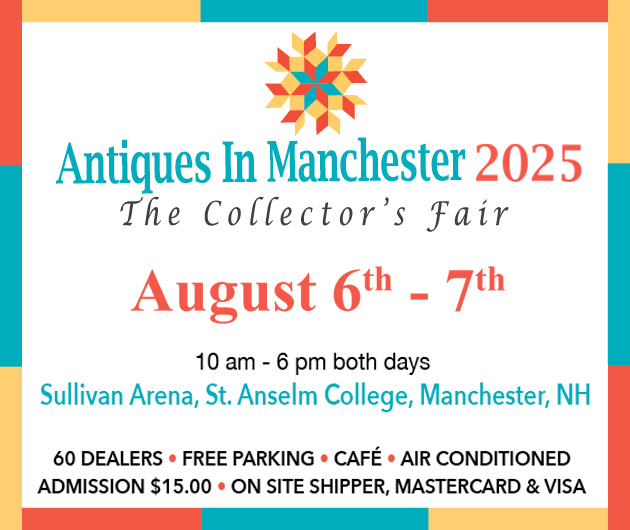The Winter Antiques Show 2008
March 21st, 2008
New York City
by Lita Solis-Cohen
"How do you explain that I sold one seven-figure object and eight six-figure objects, only one to an established client, during a week when financial markets across the world were tumbling?" asked Donald Ellis of Dundas, Ontario, and New York City, a dealer in Native American tribal art. He was marveling at the fact that anyone did business at the 54th New York Winter Antiques Show, January 18-27, and amazed at the remarkable strength of the antiques business. "Someone came in late on the last Sunday afternoon and reserved three Eskimo masks. If he buys them, it will be my best Winter Show ever, and I sold almost entirely to new people," he said.
Apparently rich people would rather put their disposable money in masterpieces than in the bank. What is troubling the stock market has not yet hit the antiques trade.
"I knew that with the stock market plunging we would have a bang-up opening," said Patrick Bell of Olde Hope Antiques. "People want to defy the reality around them and prove they are not victims of the market."
Bell said he thought the auctions felt the impact of the economic downturn more than the show, noting that folk art dealers had little competition with the sparse offerings of folk art masterpieces at auction this year.
Bell, who is on the Winter Show's dealers committee, said there were few complaints from dealers not selling. Even those who did not sell much after the first weekend said it was a beautiful show with a record attendance on preview night and a good flow of traffic all week long.
"The Winter Show has the lowest attrition of any show, and calls are coming in from strong dealers who would like to exhibit there," said Bell.
Some collectors were cautious, slow to make up their minds, but many major sales were made by top specialists in their fields. There was plenty at the show to tempt buyers, who decided they might as well buy something and enjoy it rather than invest in a declining stock market. This show attracts a very cosmopolitan audience and offered a huge variety of material: ancient and ethnographic art; Asian porcelains and works of art; paintings, drawings, prints, and sculpture; arms and armor; jewelry; silver and metalwork; and, of course, Americana during Americana Week in New York City.
"We played to a different audience here, and we did well," said Grace Snyder, new to this show but not new to the show circuit. "We have always liked European works of art, and we sold our most important piece of English treen, a signed and dated seventeenth-century wassail bowl, to an English dealer. It will go back to England. We sold European lighting, as well, during the week, but on opening night and on the last day we sold only Americana."
At the preview the Snyders sold a great rarity, an early American iron and brass double-arm candlestand. "We met an audience that indulged in the different things we like to buy," said Snyder.
James Glazer of Bailey Island, Maine, calls the Winter Antiques Show, which benefits the East Side House Settlement, "the best brand in the business." On opening night he found a buyer for a collection of five pieces of western Pennsylvania stoneware pottery, which had been exhibited at the Westmoreland Museum of Art in 2007. Additionally that evening, he sold four very large stoneware vessels and a stoneware dog advertising a druggist, stamped "Jas. Atchison, Mkr."
During the show, the Glazers sold a rare stoneware harvest jug with a cobalt blue profile of Henry Payne, who failed to be elected governor of Ohio in 1857. It has the word "democracy" on the back. It was bought by Jerry Lauren, the Polo executive and a sophisticated collector of salt-glazed stoneware with cobalt decoration and of weathervanes.
"If you prepare for it well, you sell well," said Fred Giampietro. "I prepare all year and save what I think I can sell at this venue." Giampietro said the selling patterns were different this year. "I had no business from interior designers, and I usually do. I made four sales to brand-new people in the up to $200,000 range, and couples who haven't bought in ten years came back into the market. It felt like a healthy market."
Giampietro went on to explain that the show is really two shows. "The first show lasts through the weekend. The second show starts on Monday when a different group of people come and buy at a different price level, at the four- and five-figure level. I did no business after the first weekend. Next year I will bring in some small things at lower price points for the back half of the show. I now realize that the fellow who made $500,000 ten years ago and bought a $30,000 weathervane is priced out of this market, because the best folk art has quadrupled in price, and his salary has just about kept up with inflation."
As for trends, Giampietro said he sold his edgy material; the really classic, tried and true folk art did not sell. "I still have my rooster weathervane and my 'Index' horse. Jeff Tillou also had an 'Index' horse that did not sell."
"Want to know how the show is doing? Talk to the truckers," said Carswell Rush Berlin, a dealer in Classical furniture and lighting in New York City. "They told me they took more out of this show in January than all the other shows this fall combined. We sold from our booth and from our apartment, so we did better than last year and the year before," said Berlin.
What sold well besides Americana? European folk art offered by Robert Young of London; English reform-style furnishings offered by The Fine Art Society, London, and by John Alexander of Philadelphia; and nearly two dozen English and American embroidered textiles from Titi Halle of Cora Ginsburg, New York City (such as an American crewelwork curtain and a Portuguese coverlet).
Alexander Acevedo said he sold two dozen American paintings. Sculpture, including antiquities, sold well. Daniel Katz Limited, London's leading dealer in sculpture, added a new dimension to the show by offering European sculpture of the highest quality.
The tone was set on January 17 at the evening preview party when Sheikh Saud bin Mohammed bin Ali Al-Thani arrived, didn't check his fur coat, visited only the two dealers in antiquities, and said, "I'll take that and that and that." The sheikh, who spends much of his time in London, is said to have spent more than $1.5 billion on collections ranging from fossilized dinosaurs to 19th-century photographs with a focus on Islamic art and antiquities. He has a good eye and buys the best.
Among other noteworthy sales, reported by the show's public relations office, was a Tiffany Grape table lamp with a tree trunk base that was priced at $1.2 million by Macklowe Gallery, New York City; and Donald Ellis sold a Washoe basket, a masterpiece by legendary basketmaker Louisa Keyser, better known as Dat So La Lee, for $1.2 million to Woodbury, Connecticut, dealers David Schorsch and Eileen Smiles for a client.
The loan exhibition, An Eye toward Perfection: The Shaker Museum and Library, had some impact on the market for Shaker material. "It wasn't immediate; it happened over the course of the week," said dealer Robert Wilkins of Yarmouth Port, Massachusetts, a Shaker specialist who wrote the cover story "The Shaker aesthetic reconsidered" for the January 2008 issue of The Magazine Antiques. "The usual prospects came to the opening to support the museum, but the buyers were new people who came during the week, considered their purchases carefully, and then decided to buy. The antiques business is an exercise in patience."
In conversations among dealers during downtime in the middle of the week, a topic was the idea of doing away with strict time lines, which are different for each specialty. For example, Joan Mirviss could offer Japanese prints made up to the early 20th century, but she had to direct collectors of contemporary Japanese ceramics, another of her specialties, to her new gallery at 39 East 78th Street in Manhattan.
As more dealers show their works in white cubes to prove that antiques work in contemporary settings, some hope that the Winter Antiques Show will follow the lead of London's Grosvenor House and the Haughtons' International Fair and do away with date lines, while continuing to vet for the highest quality.
For more information, see (www.winterantiquesshow.com) or call Catherine Sweeney Singer at (212) 987-0446.
© Maine Antique Digest






